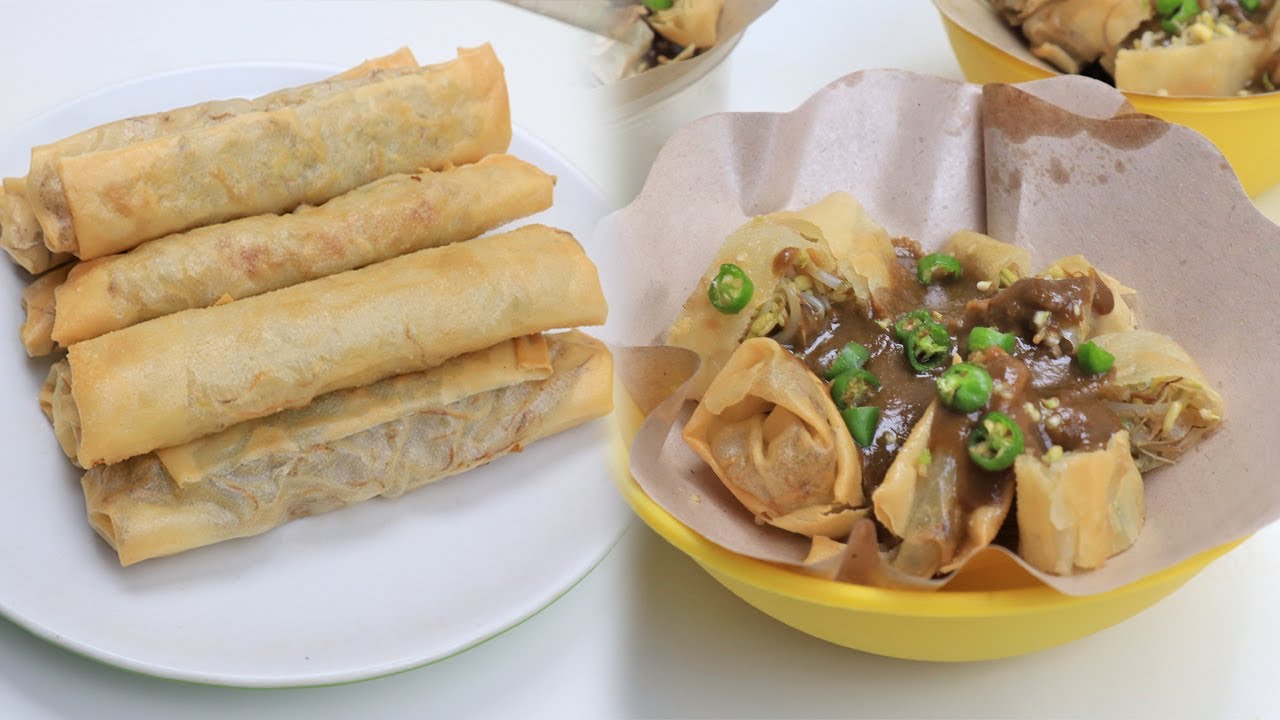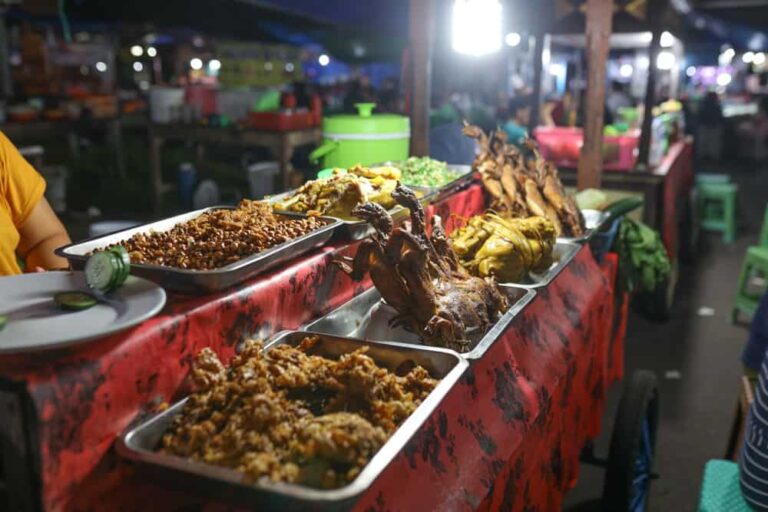Crispy, golden, and filled with flavour, Lumpia Bali is one of those snacks that instantly wins you over.
Found everywhere from roadside stalls to temple festivals, these Balinese-style spring rolls are the perfect mix of familiar comfort food and local spice.
What Are Lumpia Bali?
Lumpia are Indonesia’s take on spring rolls, and in Bali, they come with their own local twist.
The dish itself traces back to Chinese immigrants in Java, who introduced spring roll-style snacks that were later adapted into Indonesian food culture. Over time, they spread across the islands, including Bali.
Thin, crispy wrappers are filled with a mix of vegetables, minced meat, or even glass noodles, then fried golden brown. What makes Lumpia Bali stand out is the seasoning, a touch of Balinese spice paste or sambal often sneaks its way in, giving them a deeper flavour than the usual lumpia.
You’ll find them as street food snacks, in warungs, or served at family gatherings and temple festivals, as is local tradition. Always best enjoyed fresh from the fryer, they’re crunchy, fragrant, and seriously addictive.
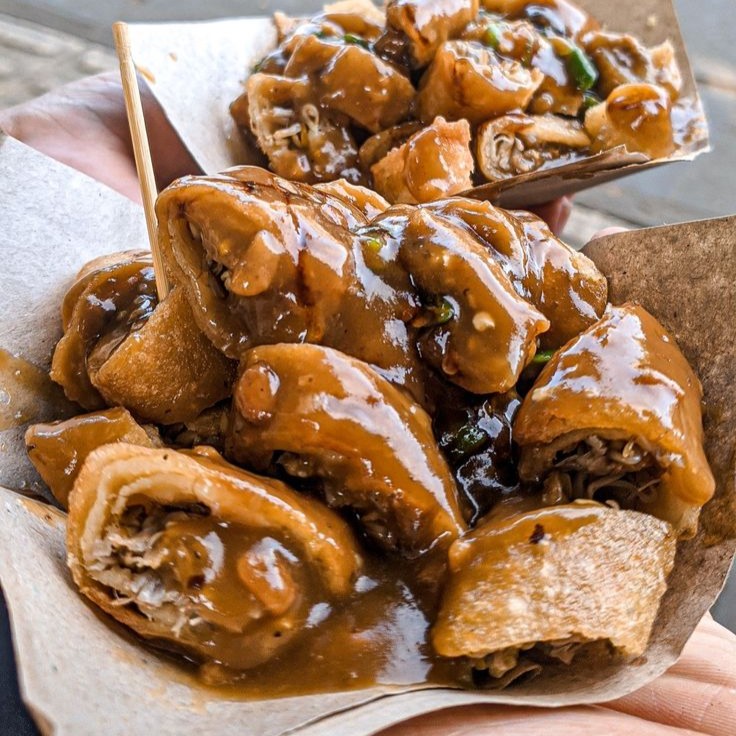
Ingrediants
The crispy lumpia spring rolls can be filled with all sorts of tasty, savoury combinations, but most versions include a mix of vegetables like carrots, cabbage, bean sprouts, and celery. Many recipes add glass noodles, which give a nice texture, and a protein such as minced chicken, prawns, or tofu.
Other ingredients often used are shallots, garlic, chilli peppers, and seasonings like pepper, salt, and a touch of Balinese spice paste or sambal for heat, sometimes even some turmeric.
Some cooks stir-fry the mixture in a frying pan with a little vegetable oil before wrapping, while others keep it raw so it cooks fully once fried.
To make the filling richer, extras like dried shrimp, bamboo shoots, or scrambled egg are sometimes added.
Everything is wrapped in a thin spring roll wrapper, brushed with a little beaten egg to seal, then deep-fried until golden and crispy. Once cooked, they’re left to cool slightly, drained of excess oil, and served hot with dipping sauce.
The result is a crunchy outside with a warm, flavour-packed centre — the kind of snack that disappears fast once served.
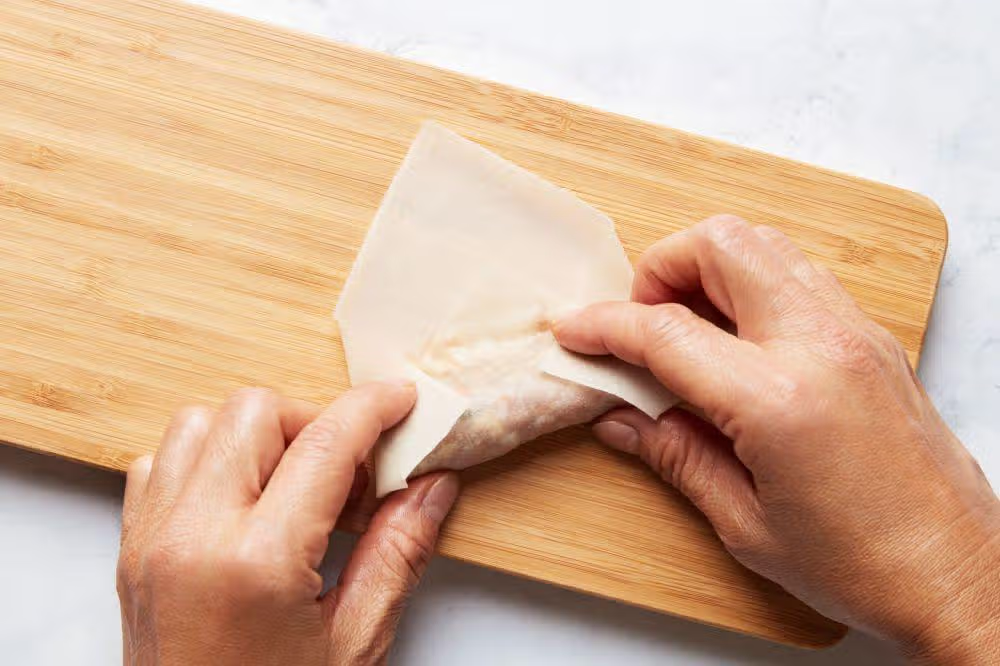
Sauces Which Go With Lumpia
Dipping sauces are half the fun when it comes to lumpia, and in Bali, you’ll find a few favourites.
The most common is sweet soy sauce (kecap manis), often mixed with sliced chillies for a salty-sweet kick. Sambal is another go-to, adding heat and a touch of garlic that balances perfectly with the crisp wrapper.
Some warungs also serve lumpia with a sweet and sour sauce, giving you a tangy contrast to the savoury filling. In Central Java, the local lumpia semarang are often served with sauces made of fermented soybean paste and palm sugar or brown sugar, and you’ll occasionally see this and other Indonesian influences in Bali, too.
Whichever way you try them, the sauces turn lumpia from a tasty snack into a flavour-packed bite of Indonesian street food culture.
Where To Find The Best Lumpia
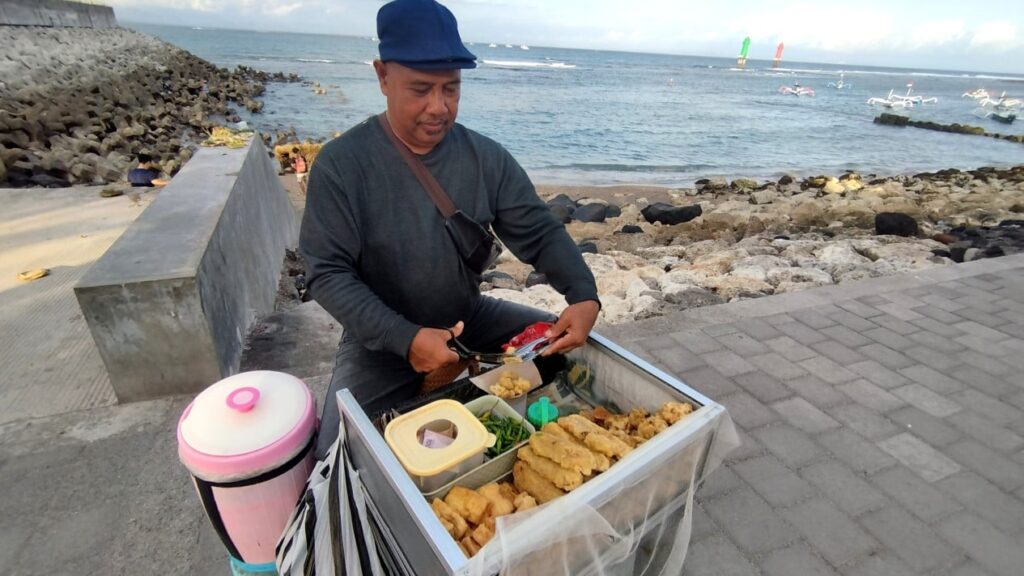
You’ll find these spring rolls all over Bali, especially around the busy central hub.
Some of the very best are made for temple festivals or family gatherings, and if you’re lucky enough to be invited, you’ll see just how good they can be.
That said, there are also plenty of places where you can track them down if you’re visiting.
- Night Markets – Spots like Gianyar Night Market, Sindhu Night Market, or Kreneng in Denpasar are lively hubs packed with street food vendors. Lumpia is a common find, often served fresh from the fryer alongside other local snacks.
- Warungs and Roadside Stalls – Family-run warungs and little carts (kaki lima) are everywhere, and many serve lumpia as a quick snack. These versions are usually inexpensive, piping hot, and full of flavour.
- Local Gatherings and Festivals – As mentioned, village banjars and temple celebrations are where you’ll often find the most authentic lumpia. If you get the chance to join in, you’ll taste them at their very best, homemade, crisp, and seasoned with care.
- Food Streets – In areas like Seminyak, Canggu, and central Denpasar, food streets are lined with vendors and casual spots where lumpia is a popular choice, especially in the evenings.
Home From Bali And Still Craving Them Spring Rolls?
Good news, lumpia isn’t just something you can only enjoy in Bali. They’re actually pretty easy to make at home if you’ve got the basics: spring roll wrappers, a frying pan with a little oil, and your choice of filling.
A classic combo is carrots, cabbage, and bean sprouts stir-fried with garlic and shallots, but you can also add chicken, prawns, tofu, or even scrambled egg to make them heartier. Brush the wrapper edges with beaten egg to seal, fold them tight, and fry until golden and crisp.
The key is in the flavour. A spoonful of sambal or a bit of Balinese spice paste mixed into the filling makes all the difference. Serve with sweet soy sauce or sweet and sour sauce on the side, and you’ve got yourself a plate of crispy lumpia that tastes just like Bali.
FAQs
What’s The Difference Between Lumpia And Spring Rolls?
They’re very similar, but lumpia is Indonesia’s version of the spring roll.
The difference comes down to flavour and style. Chinese spring rolls are often lighter, while lumpia usually has heartier fillings like noodles, minced meat, or mixed vegetables.
In Bali, they often get an extra kick from spice paste or sambal, making them bolder and more savoury than the typical spring roll you might know.
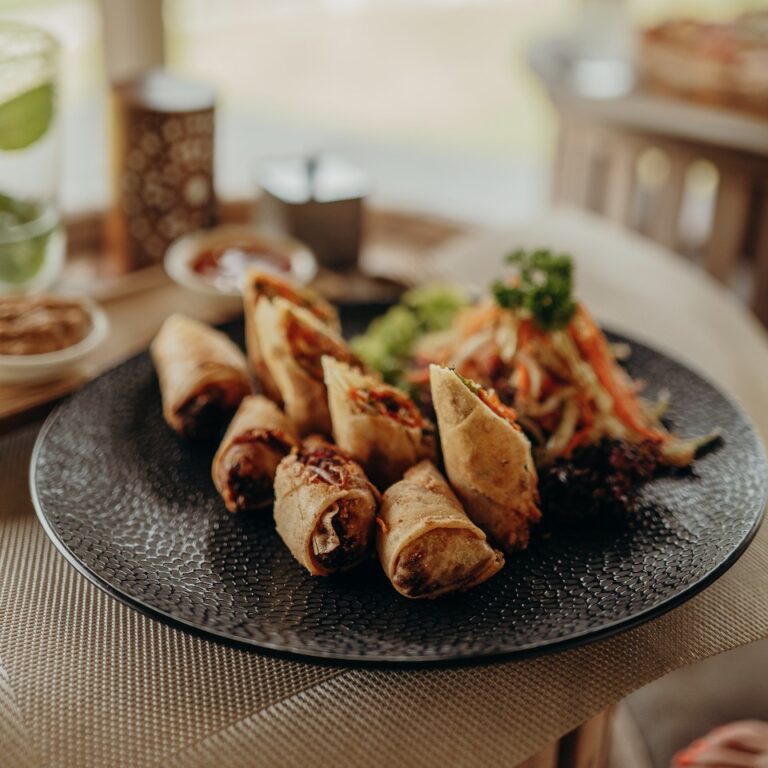
Is Lumpia Bali Vegetarian?
It can be, and many stalls and warungs offer a vegetable-only version filled with carrot, cabbage, bean sprouts, and sometimes noodles.
That said, meat and seafood fillings are also common, so if you’re vegetarian, it’s best to check before ordering. Either way, dipping them in sambal or sweet soy sauce is almost always part of the experience.
Where Can I Try Lumpia Bali?
Lumpia is easy to find across Bali. Roadside vendors and night markets often serve them fresh from the fryer, and many local warungs include them on the menu as a quick snack or starter.
Restaurants sometimes give them a modern twist with creative fillings, but for the most authentic taste, head to the small stalls where they’re made in front of you.
What Happens If I Eat Too Many Spring Rolls?
You’ll probably just end up feeling stuffed and a bit greasy around the edges. Spring rolls are light and crispy, but once you’ve downed half a dozen, it all starts to catch up.
The good news is you won’t be in any real hot water, apart from maybe needing a little lie-down or a long walk afterwards.
Most locals reckon they’re best enjoyed in small bursts, but honestly, going overboard on these tasty rolls now and then is part of the fun.
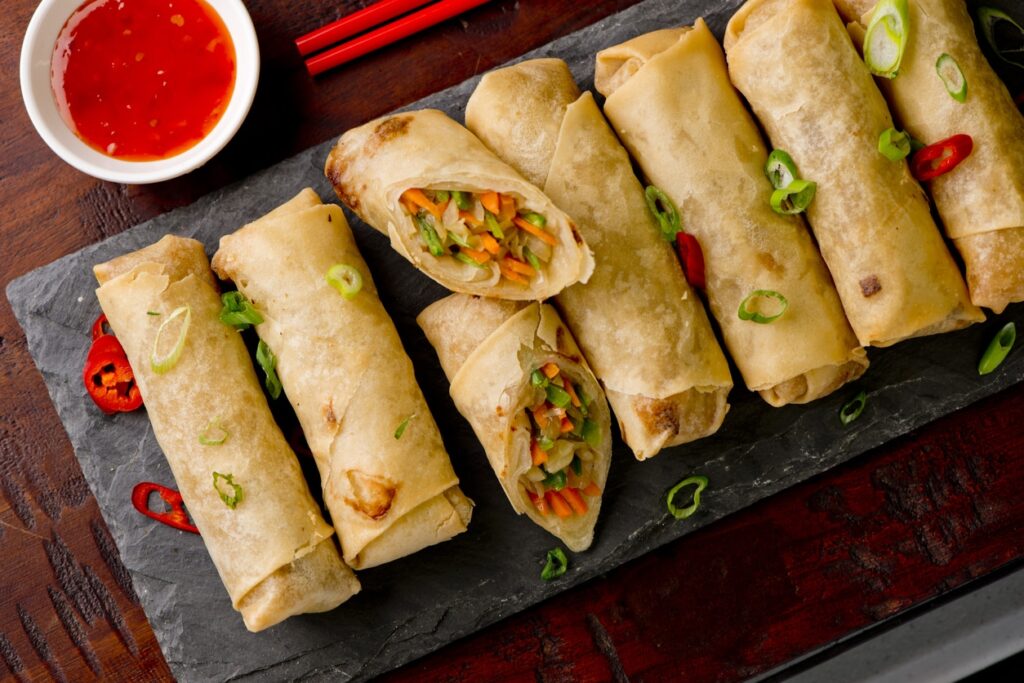
Is Lumpia Bali Spicy?
Not always. Some are made mild to appeal to all tastes, but many locals enjoy them with sambal on the side, which adds plenty of heat.
The filling itself can also include a little chilli or spice paste, so expect at least a subtle kick in most Balinese versions.
If you love spice, go heavy on the sambal; it’s the classic way to eat them.
Can I Survive On Just Lumpia?
Tempting as it sounds, probably not. Lumpia make a brilliant snack, but you’d miss out on all the other good stuff Bali has to offer.
Living off nothing but spring rolls would leave you craving something fresh, and maybe a salad or two. Still, if you tried, you’d be the happiest human for a little while.
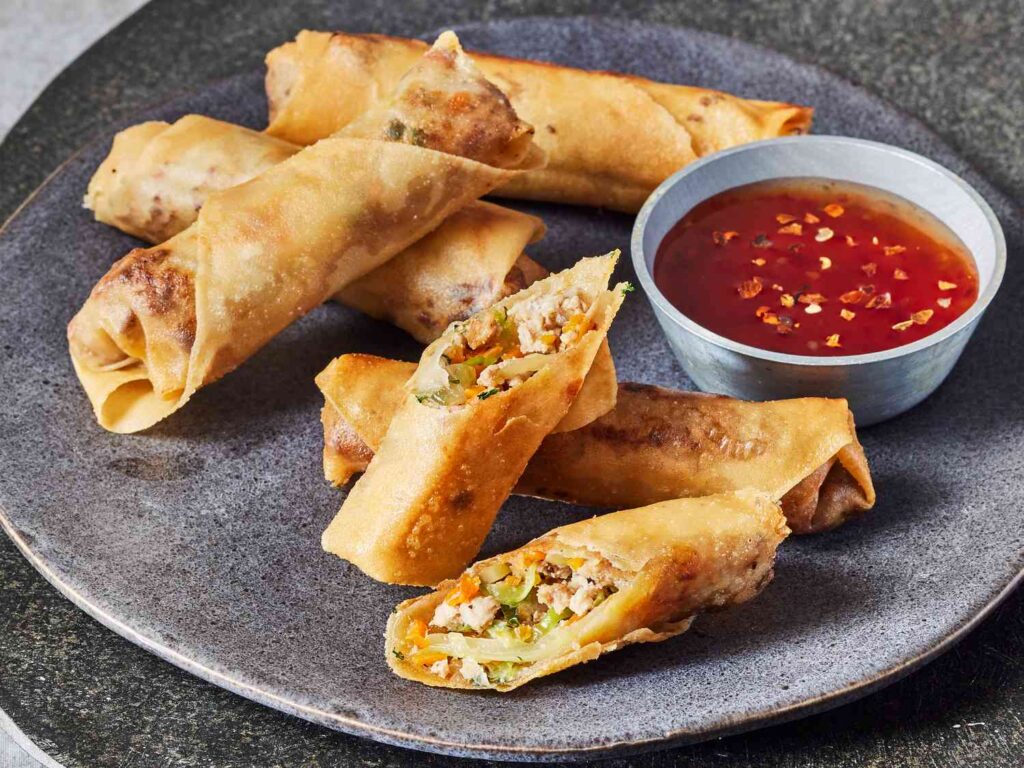
I Saw Lumpia In The Philippines. Are They The Same Thing?
They share the same roots, but they’re not identical. Lumpia spread through Southeast Asia and became part of both Indonesian and Filipino food culture.
In the Philippines, you’ll often see lumpiang shanghai, which is fried with pork or vegetables, or lumpiang sariwa, which is served fresh with a soft wrapper. In Bali, lumpia is almost always fried and flavoured with local spices or sambal.
The idea is the same, a rolled wrapper with a savoury filling, but the taste and style reflect the country where it is made.
Final Thoughts On Lumpia Bali
If you’re exploring Balinese food, lumpia is a simple but tasty snack that shouldn’t be skipped.
Crispy, satisfying, and easy to find, it’s one of those dishes that shows how Balinese flavours transform something familiar like a spring roll into a local favourite.
Whether you grab a few at a roadside stall or enjoy them as part of a larger meal, Lumpia Bali is a crunchy little bite of island culture worth seeking out.

